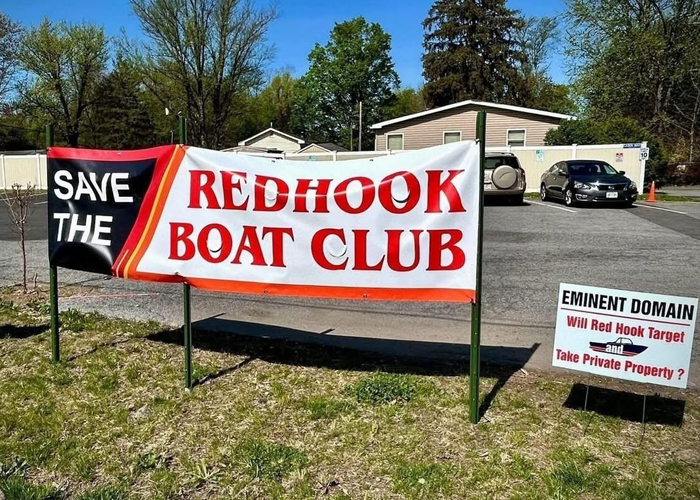## The Lights Dim: Paramount Hudson Valley Loses Funding, Leaving a Community in the Dark
For years, the Paramount Hudson Valley stood as a beacon of hope in a struggling downtown, its grand marquee promising an escape from the everyday. But this week, that hope flickered and dimmed with the news that the beloved theater will lose crucial grant funding.

Fighting Back: Paramount Seeks Community Support

Paramount Hudson Valley Arts, a nonprofit organization dedicated to providing high-quality arts programming to the community, has been dealt a significant blow with the withdrawal of a grant from the National Endowment for the Arts (NEA). The grant, which was earmarked for performances of Cirque Zuma Zuma and an Argentine tango performance, was terminated due to the NEA’s updated priorities, which focus on projects “prioritized by the President.” This shift in priorities has left many arts organizations, including Paramount Hudson Valley Arts, struggling to come to terms with the loss of funding.
Abigail Adams, executive director of Paramount Hudson Valley Arts, expressed her disappointment with the NEA’s decision, stating that the organization was “not alone” in receiving similar emails terminating their grants. She emphasized that the loss of funding is not just a setback for Paramount Hudson Valley Arts, but also for the community as a whole.
The organization is now turning to the community for support, calling on patrons and neighbors, business and civic leaders to help make up for the lost funding. “If the federal government won’t fund inclusive arts programming that celebrates all of us, then it’s up to all of us to do whatever we can to make sure this kind of community-focused programming can survive at the Paramount,” Adams said.

Appealing the NEA’s Decision
Paramount Hudson Valley Arts is also planning to appeal the NEA’s decision, a process that takes time and effort. However, there is no guarantee that the appeal will be successful, which is why the organization is emphasizing the importance of community support.
Appealing the NEA’s decision involves submitting a written appeal to the agency, providing evidence and justification for why the grant should be reinstated. This process can take several months, and the outcome is often uncertain.
Community Involvement and Fundraising Initiatives
So, what can the community do to support Paramount Hudson Valley Arts? There are several ways to get involved and make a difference:
- Donate to Paramount Hudson Valley Arts: Consider making a donation to help support the organization’s arts programming.
- Volunteer: The organization relies on volunteers to help with events, administrative tasks, and other activities.
- Pledge to support the Paramount: Consider making a pledge to support the Paramount’s arts programming for a specific amount of time.
- Spread the word: Help spread the word about the importance of community-focused arts programming and the impact of losing funding.
These are just a few examples of how the community can get involved and make a difference. Every bit counts, and even small actions can add up to make a significant impact.
A Larger Conversation: The Future of the NEA
The withdrawal of the grant by the NEA is just one symptom of a larger issue affecting the arts community. The NEA’s updated priorities, which focus on projects “prioritized by the President,” have raised concerns about the future of arts funding in the United States.
The NEA was established in 1965 to provide funding for arts and cultural projects across the country. Over the years, it has played a crucial role in supporting the development of arts and culture in the United States. However, recent changes in the NEA’s priorities have sparked concerns about the agency’s commitment to supporting grassroots arts organizations.
The Broader Political Context
The NEA’s updated priorities are part of a broader conversation about the role of the arts in American society. The debate surrounding the NEA’s funding has been ongoing for several years, with some arguing that the agency should focus on more “relevant” projects, such as those related to science, technology, engineering, and mathematics (STEM) education.
However, others argue that the NEA’s funding is essential for supporting the arts and cultural sector, which has a significant impact on the country’s economy, education system, and social fabric. The loss of funding for arts organizations like Paramount Hudson Valley Arts highlights the importance of this debate.
The Implications for Arts Funding
The implications of the NEA’s funding shift for the future of arts funding in the United States are far-reaching. If the agency continues to prioritize projects aligned with the President’s agenda, it is likely that grassroots arts organizations will continue to struggle to access funding.
This could have a devastating impact on the arts community, leading to a decline in artistic diversity and representation. The loss of funding for arts organizations like Paramount Hudson Valley Arts highlights the urgent need for policymakers to support the arts and cultural sector.
The NEA’s funding shift also raises questions about the agency’s commitment to supporting arts programming that celebrates diversity and inclusivity. The loss of funding for projects like Cirque Zuma Zuma and the Argentine tango performance highlights the importance of preserving arts programming that reflects the country’s diverse cultural heritage.
The Potential Impact on Artistic Diversity and Representation
The potential impact of the NEA’s funding shift on artistic diversity and representation is significant. If the agency continues to prioritize projects that align with the President’s agenda, it is likely that artistic diversity and representation will decline.
This could have a range of negative consequences, including:
- A decline in arts programming that celebrates diversity and inclusivity.
- A reduction in opportunities for artists from diverse backgrounds to access funding and resources.
- A loss of artistic innovation and creativity, as arts organizations are forced to conform to a narrower definition of what is considered “relevant.”
The NEA’s funding shift highlights the urgent need for policymakers to support the arts and cultural sector. By prioritizing funding for arts organizations that celebrate diversity and inclusivity, policymakers can help preserve artistic diversity and representation for generations to come.
Conclusion
Conclusion: Paramount Hudson Valley Loses Grant Funding – A Setback for Community Arts
As we wrap up our investigation into the loss of grant funding for Paramount Hudson Valley, a few key points emerge. Paramount’s struggles to secure funding are not isolated incidents, but rather a symptom of a broader issue affecting arts institutions across the country. The loss of federal and state grants has had a ripple effect on the organization’s operations, forcing them to make difficult decisions about programming and staffing. Furthermore, the impact on the local community is undeniable, as the loss of funding threatens the very existence of a beloved cultural institution.
The significance of this topic extends far beyond the walls of Paramount Hudson Valley. The loss of grant funding has profound implications for the future of community arts, highlighting the need for sustainable funding models that prioritize the long-term viability of these institutions. As we move forward, it’s essential that policymakers and philanthropic organizations prioritize the arts, recognizing their value in promoting social cohesion, economic development, and educational enrichment. The loss of Paramount Hudson Valley’s grant funding serves as a wake-up call, prompting us to re-examine our priorities and seek innovative solutions to support the arts.
As we look to the future, one thing is clear: the loss of Paramount Hudson Valley’s grant funding is a setback for community arts, but it’s not a death knell. It’s an opportunity for us to come together, to demand more from our policymakers and philanthropic leaders, and to find creative solutions to support the arts. We must ask ourselves: what kind of community do we want to build? One that values the arts and prioritizes the well-being of its citizens? The answer, of course, is yes. And it’s up to us to make it happen.
